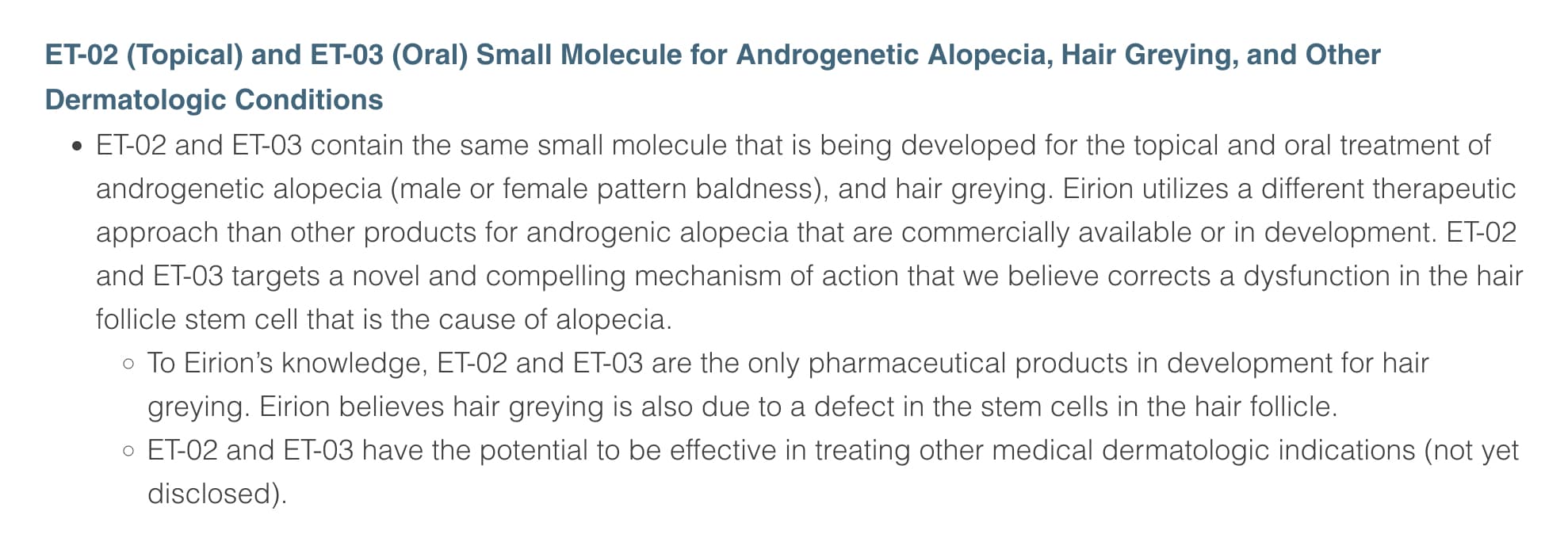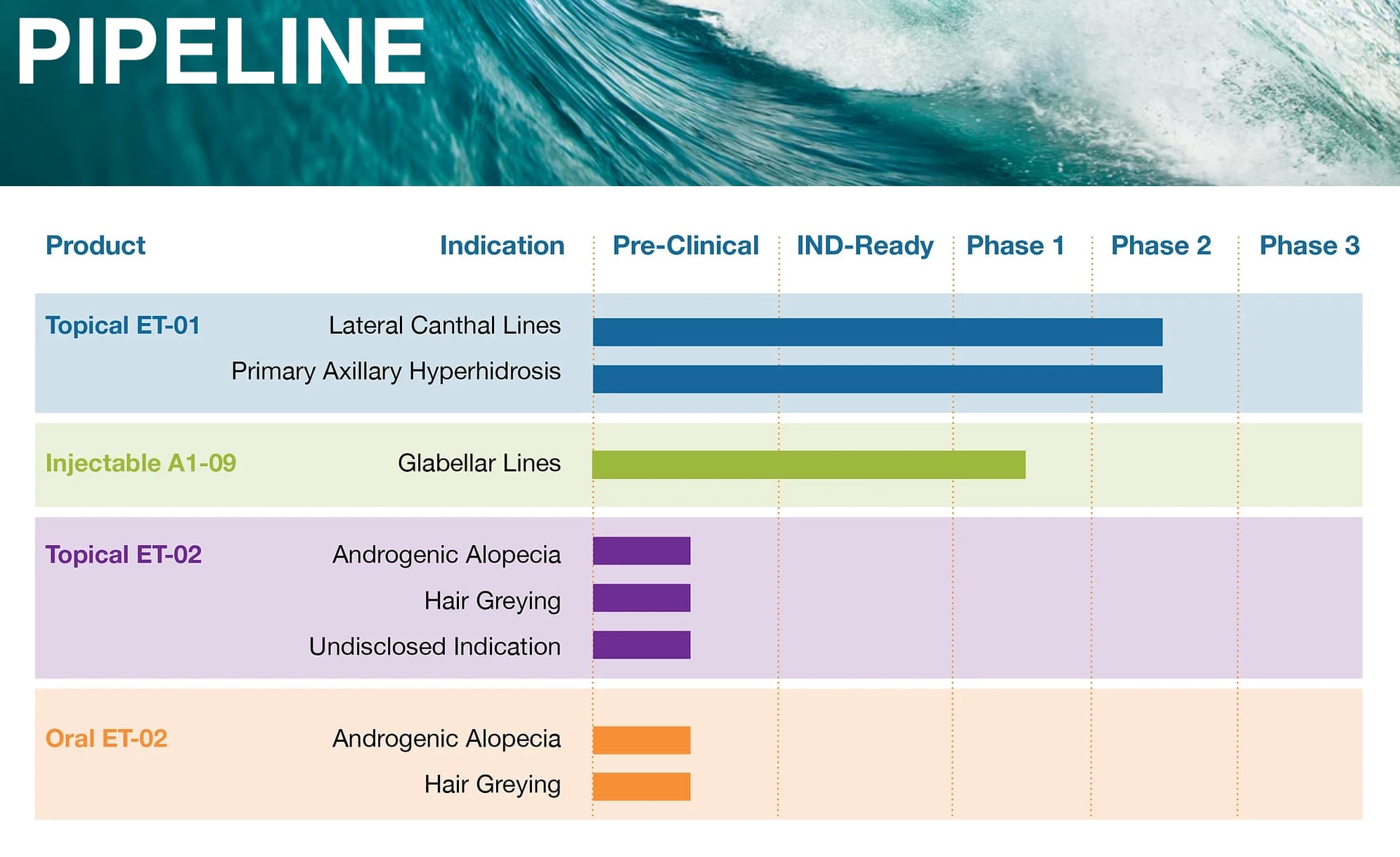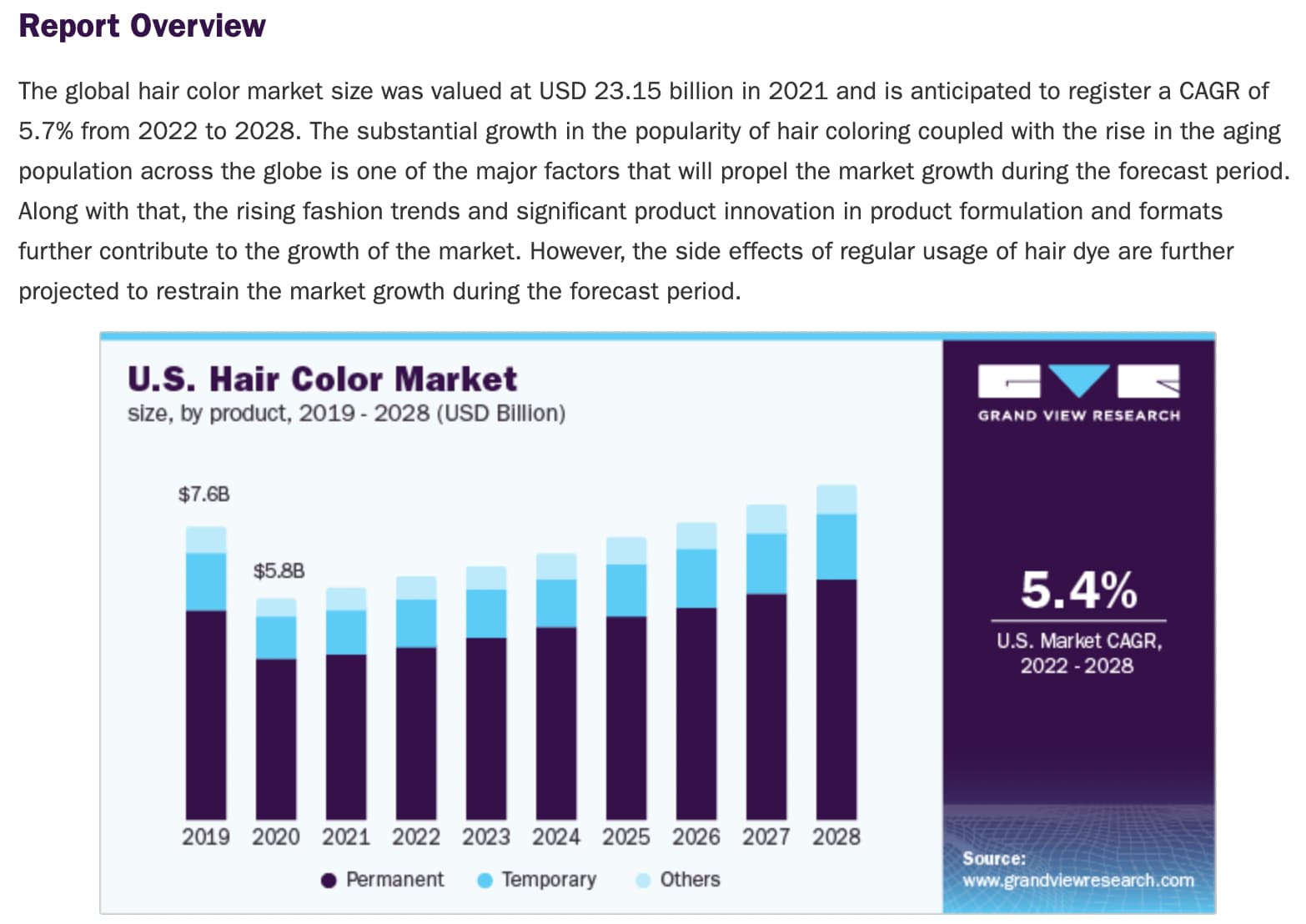I’ve been using this for years on my eyebrows and eyelashes and it works for me wherever it’s applied. I have not noticed my scalp hair darkening or graying reversed. That said my grays have not increased. It’s hard to know whether or not it might have been worse if I’d not started using it.
A couple of months ago about the same time that I made my topical rapamycin skin treatment I put a full 3ml bottle bimatoprost eye drops in distilled water and transcutol to use as a scalp spray in hopes of repigmentation. I’ll keep y’all posted if it works.
Interesting article, @Bezesk. Here’s support for this in treating skin depigmentation from vitiligo in a small clinical trial. My understanding is that both the Lantanoprost cream and the UV light treatment are temporary, meaning they last for a few months but need to be administered pretty much forever (maybe pulsed, but forever). I had the laser treatment for vitiligo (miraculously insurance paid for it) and the dermatologists said it was much better than the cream (although that may have been because they bought the excimer laser already) — treatment was a real pain: 30 sessions coming in to the office over 12 consecutive weeks, it maybe darkened spots a bit (suggested 25-75%) and only supposed to last 9-18 months, so every year I’d have to spend 12 weeks coming into my doctor’s office 3x per week….not the most convenient for those of us not yet retired, or who travel.
The effect of latanoprost on vitiligo: a preliminary comparative study
Tag S Anbar et al. Int J Dermatol. 2015.
Abstract
Latanoprost (LT), a prostaglandin F 2alpha (PGF2a ) analogue used in the treatment of glaucoma, was found to induce skin pigmentation in guinea pigs in addition to its known periocular and iridal pigmentation side effects. This study aims to evaluate the efficacy of topical LT in the induction of skin repigmentation in patients with vitiligo and to compare its potency with narrow band ultraviolet (UV) B (NB-UVB). The result of their combination was also assessed. This study involved 22 patients with bilateral and symmetrical vitiligo lesions, stable for the last three months, divided into three groups: group I, to evaluate LT vs. placebo; group II, to evaluate LT vs. NB-UVB; and group III, to evaluate the effect of their combination. The response to treatment was evaluated by taking photographic records of the treated lesions with follow-up photography every two weeks. After three months, assessment of the degree and extent of repigmentation was performed. Follow-up assessment was done six months after termination of the trial for the persistence of pigmentation, recurrence, or development of any side effects. LT was found to be better than placebo and comparable with the NB-UVB in inducing skin repigmentation. This effect was enhanced by the addition of NB-UVB. LT could be a promising treatment for vitiligo, especially the periocular variant. Its effect on skin repigmentation could be enhanced by NB-UVB exposure.
Example :1 Effects of Topical PAI-1 inhibitor formulation on Hair Graying
[02431 A topical study oftopical PAI-1 inhibitor formulation after topical
administration ofa topical formulation ofPAI-1 inhibitor (e.g… see Table 1) in man is
performed. The study is designed to test whether the topical formulation of PAI-1 inhibitor
significantly reduces hair graying in man by measuring hair color change following topical treatment with a PAI-1 inhibitor.
[0244] The study includes two groups of 25 human subjects each. Both groups have subjects with varying levels ofhair follicle density and varying numbers and/or density of gray hairs. The scalp ofeach subject in the second group is treated twice a day for 6 months topically with a fixed volume of aPAI-1 inhibitor formulation that is at a fixed
concentration ofthe PAI-1 inhibitor. The concentration of the PAI-1 inhibitor in the formulation is 5% w/w. The administration of the topical preparation to the scalp takes about 5 minutes, after which the suspension is left on the site for about 8 to 12 hours. The scalps of the subjects in the first group are treated twice a day for 6 months topically with an empty formulation and is the control.
[0245| The expected effect of such a treatment is a reduction in the density of gray hairs at the site of the PAI-I inhibitor formulation treatment. The number of gray hairs at the treatment sites is measured by two methods: 1) A photograph of the treated area is taken to observe a change in the hair color; or 2) A gray hair density test, wherein the gray hair count in a small site on each subject’s scalp is measured. The small site on the scalp is selected prior to the commencement of the study.
[0246] A photograph and the gray hair density test method are employed at baseline prior to a PAI-1 inhibitor treatment. Following this photographs of the scalp of each subject is obtained every four weeks after start oftreatment and at the end of the 6-month study; the gray hair density test is also performed every four weeks after start of treatment and at the end of the 6-month study. The study finds that at Baseline, the average amount of gray hairs counted by either the gray hair density tests or as observed from the photographs is approximately equal across the control and treatment groups. Photographs of the scalps of the subjects of the treatment group on average show a visual reduction in the total number of gray hairs with every four weeks. The gray hair density test also on average shows a reduction in the number of gray hairs in the site selected on the scalp of each subject belonging to the treatment group with every four weeks. In contrast subjects in the control group showed no visual reduction in gray hairs in the treatment site, or reduction in the density ofgray hairs in the selected site on the scalp.
[02471 This study establishes that topical administration of the topical formulation of PAI-1 inhibitor reduces gray hair count and reverses hair graying in humans.
Example 2: Effects of Oral PAI-1 inhibitor formulation on Hair Graying
[0248] A study of oral administration of an oral formulation of PAI-1 inhibitor in man is performed. The study is designed to test whether the oral formulation of PAI-1 inhibitor significantly reduces hair graying in man by measuring hair color change following oral treatment with a PAI-1 inhibitor.
[02491
The study includes two groups of 25 human subjects each. Both groups have subjects with varying levels of hair follicle density and varying numbers and/or density of
gray hairs. Each subject in the second group is administered an oral preparation of PAl-1 inhibitor formulated as a 75 mg capsule thrice a day for 6 months. Each subject in the first group are administered an oral empty preparation formulated as a 75 mg capsule thrice a day for 6 months and serve as the control.
[02501
The expected effect of such a treatment is a reduction in the density of gray hairs due to the PAI-1 inhibitor formulation treatment. The number of gray hairs on the scalps of the subjects is measured by two methods: 1) A photograph of the scalp is taken to observe a change in the hair color, or 2) A gray hair density test, wherein the gray hair count in a small site on each subject’s scalp is measured. The small site on the scalp is is selected prior to the commencement of the study.
[02511 A photograph and the gray hair density test method are employed at baseline prior to a PAI-1 inhibitor treatment. Following this photographs ofthe scalp of each subject is obtained every four weeks after start of treatment and at the end ofthe 6-month study; the gray hair density test is also performed every four weeks after start of treatment and at the end of the 6-month study. The study finds that at baseline, the average amount of gray hairs counted by either the gray hairdensity tests or as observed from the photographs is approximately equal across the control and treatment groups. Photographs of the scalps of the subjects of the treatment group on average show a visual reduction in the total number of gray hairs with every four weeks. The gray hair density test also on average shows a reduction in the number ofgray hairs in the site selected on the scalp of each subject belonging to the treatment group with every four weeks. In contrast subjects in the control group showed no visual reduction in gray hairs in the treatment site, or reduction in the density of gray hairs in the selected site on the scalp.
[0252]
This study establishes that oral administration of the oral formulation of PAI- 1inhibitor reduces gray hair count and reverses hair graying in humans.
Could you share the name of the pharmacy that produces a compounded cream version of tacrolimus? I would like to ask my dermatologist if she will send an Rx there for me. I am currently using the ointment and it is a bit annoying. Thank you!
What questions do you have for them?
It seems like its still really early in their development program (and given the state of the biotech funding world (very bad) that may be a sign they are moving slowly : https://moonink6.wixsite.com/eirion/pipeline
If they really nail a efficient cure for gray hair, I reckon it’ll be the biggest medical game-changer since Viagra.
Absolutely! Think about this - if you could time travel back to the Middle Ages and meet an elderly king, which kind of medicine do you suppose would make the greatest impression? Would it be something that restores his virility and gives him a youthful look, or a treatment for a lingering chronic disease?
Pharmacy is called SKNV based in Florida (for compounded tacrolimus cream)
They ship direct to you after your health care provider sends in prescription. Last time I checked, all Rxs are $49 and 2 day shipping is free.
Thank you! I will check them out. Much appreciated!!
Thanks. I did run across them while searching, but they no longer had it in stock.
I’m not really excited about E. angustifolium anymore. If you read the post after the one where I asked about the extract, I was able to get my hands on the full text of the paper where they tried it. They only found a reduction of 3.4% of gray hair, so it doesn’t seem worth it to me.
- Scientists have discovered a protein which helps long, strong hairs grow out of moles on our skin.
- The protein could be harnessed to create new treatments for baldness, by microneedling in the scalp.
- A first trial of this Botox-like approach is set to get underway this summer.
Full Open Access Paper:
Signalling by senescent melanocytes hyperactivates hair growth
Niche signals maintain stem cells in a prolonged quiescence or transiently activate them for proper regeneration1. Altering balanced niche signalling can lead to regenerative disorders. Melanocytic skin nevi in human often display excessive hair growth, suggesting hair stem cell hyperactivity. Here, using genetic mouse models of nevi2,3, we show that dermal clusters of senescent melanocytes drive epithelial hair stem cells to exit quiescence and change their transcriptome and composition, potently enhancing hair renewal. Nevus melanocytes activate a distinct secretome, enriched for signalling factors. Osteopontin, the leading nevus signalling factor, is both necessary and sufficient to induce hair growth. Injection of osteopontin or its genetic overexpression is sufficient to induce robust hair growth in mice, whereas germline and conditional deletions of either osteopontin or CD44, its cognate receptor on epithelial hair cells, rescue enhanced hair growth induced by dermal nevus melanocytes. Osteopontin is overexpressed in human hairy nevi, and it stimulates new growth of human hair follicles. Although broad accumulation of senescent cells, such as upon ageing or genotoxic stress, is detrimental for the regenerative capacity of tissue4, we show that signalling by senescent cell clusters can potently enhance the activity of adjacent intact stem cells and stimulate tissue renewal. This finding identifies senescent cells and their secretome as an attractive therapeutic target in regenerative disorders.
I just stumbled on these reddit progress pics, if before really is before and after after 🫨
Just found out that COVID causes significant hair loss for 3-6 months after infection. Now I have an explanation why my hair has gone to crap over the last 2 months. Just 4 more months to go… ![]()
Thanks COVID
With aging, hair graying is a common sign resulting from complex regulation of melanogenesis. Multiple factors control the stimulation of melanogenesis at the level of the hair follicle, including melanin-stimulating hormone (MSH), adrenocorticotropic hormone, endothelin-1, prostaglandins, leukotrienes, neutrophils, fibroblast growth factor, nitric oxide, catecholamines, Vitamins, and minerals. Premature hair graying (PHG) has a major impact on the cosmesis, self-credibility, and social life of the affected individual. Currently, there is no medical treatment available for PHG. We present a case of a 25-year-old female with a history of graying of hair on the scalp. Clinical diagnosis revealed it as a case of premature graying/canities. She was prescribed a topical formulation (Greyverse solution) containing palmitoyl tetrapeptide 20, a biomimetic biopeptide of α -MSH for treating her PHG. The formulation was applied 1 mL twice daily directly on the affected part of the scalp. Hair supplements containing a combination of biotin and calcium pantothenate once daily orally were also prescribed. After 3 months, the patient showed some improvement, and the dose of the topical solution was reduced to 1 mL once daily. After 5 months, the patient achieved >90% conversion of gray hair to black hair.
A discussion about when the drug might hit the market, why they’re so hopeful about it and more general questions related to the ‘hair industry’ is probably all there is scope for at the moment, but I still believe that it’d prove worthwhile. Would be good to receive some sort of official communication from Eirion.
This study first uncovered and comprehensively investigated the pigmentation effect of the leaf extract of Epimedium brevicornum Maxim. in vitro and in vivo. The underlying mechanisms were clarified from two aspects: for the melanin biosynthesis process, the extract promoted tyrosinase activation, and upregulated the expression of TYR, TRP-1, and DCT through the MAPK/ERK1/2 signal pathway; for melanosome biogenesis and transfer procedure, the extract raised melanosome numbers, accelerated melanosome maturation in melanocyte whereby dendrites were stimulated to grow/extend for melanosomes transport, as well as effectively induced melanosome transfer from melanocyte to keratinocyte. Moreover, the six major Epimedium flavonoids were identified, and epimedin B was determined as a high-content, low-toxic, and melanogenic ingredient (Figure 10). Taken together, our results demonstrate that Epimedium brevicornum Maxim. extract induces melanogenesis and melanosome biogenesis, which suggests its novel therapeutic application for hypopigmentation disorders.
More info:
Seems it has some side effects too, that might actually be a positive thing ![]()


